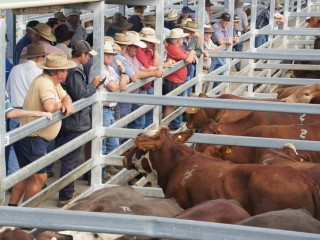 Publishers note: This article has been modified since it was first posted last night, following a set of revised kill figures being issued by MLA’s NLRS this morning.
Publishers note: This article has been modified since it was first posted last night, following a set of revised kill figures being issued by MLA’s NLRS this morning.
Beef processing activity in all States remained virtually unchanged last week, with the national weekly adult cattle kill ending Friday edging upwards to 148,451 head, up 1pc on a week earlier.
Meat & Livestock Australia’s NLRS reported the biggest national weekly kill for the year so far, and the highest since May 2010, rising from 146,939 recorded over the previous seven days.
Queensland’s kill reached 79,493 head, up 1pc on a week earlier, and +2pc on the same week last year. The NSW kill reached 37,759 (+1pc); Victoria 18,995 (+1pc); South Australia 7839 (-1pc); and Tasmania 4365 (+1pc). Western Australian figures are not recorded by MLA’s NLRS service.
The Queensland kill rose last week in spite of JBS Australia’s decision to drop its Saturday shift at its Rockhampton plant.
The impact of the A$, fluctuations in cattle supply in the past fortnight, and the ongoing labour challenges with manning plants have all impacted on the provision of additional shifts. A resurgent mining sector is again having an impact on processors’ ability to muster a kill floor and boning room roster, particularly for extra shift work, sources said.
One large processor contacted this week said the amount of good feed still present in paddocks across Queensland and large areas of NSW meant there could be some ‘very heavy cattle’ coming forward in the next few months.
“Weight and numbers is the name of the game at the moment, but at the same time, we still need suppliers to accurately hit the sweet-spot on the grid,” he said.
“There’s a risk that an increasing number of slaughter cattle in coming months may be just too big for requirements. It gets to a point where muscle cuts become too large to suit the intended market.
"With bigger primals, the only way to hit the portion-cut serve weight (say, 300 grams) is to cut them thinner, and that is not always the best option to deliver the best eating performance,” he said.
